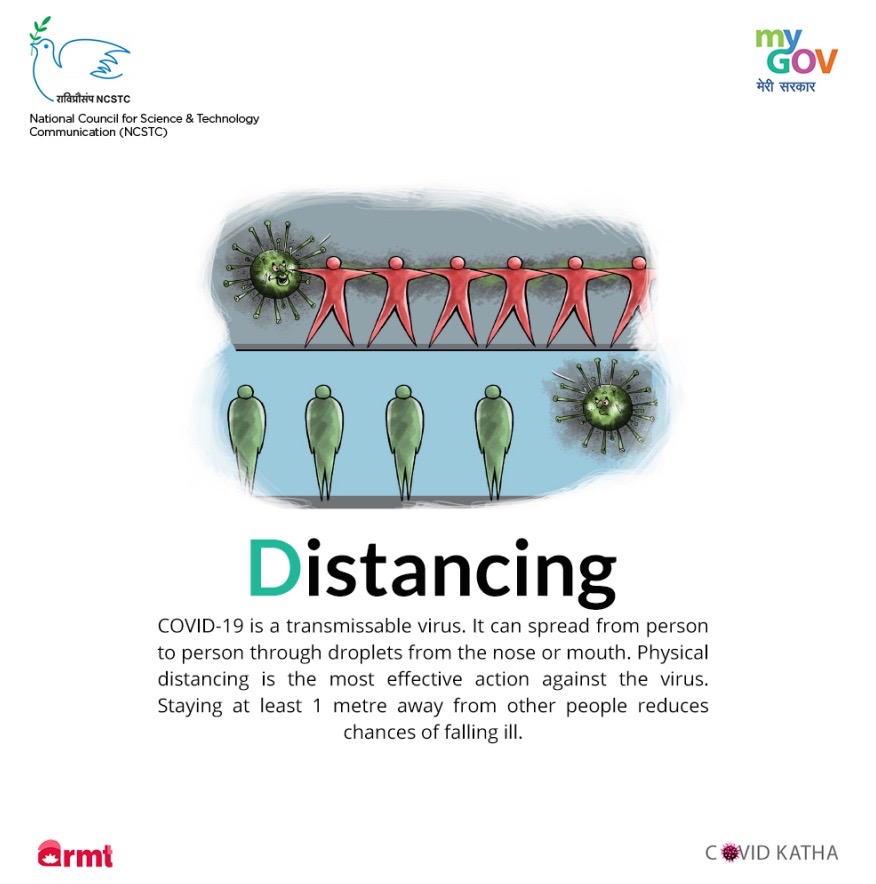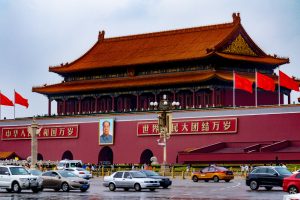BACKGROUND
Under the directions of the National Disaster Management Authority (NDMA), the first lockdown in India began from 25th March 2020 under the Disaster Management Act, 2005 for a period of 21 days to contain the spread of the deadly coronavirus pandemic in India. The details of Indian lockdown period is mentioned below.
| Coronavirus Lockdown | Dates |
| Lockdown 1.0 | 25 March to 14 April 2020 |
| Lockdown 2.0 | 15 April to 3 May 2020 |
| Lockdown 3.0 | 4 May to 17 May 2020 |
| Lockdown 4.0 | 18 May to 31 May 2020 |
| Lockdown 5.0 (Unlock 1.0) | 01 June 2020 to 30 June 2020 |
The country has gradually started unlocking and we are currently in unlock 1.0 phase.
Under Unlock 1.0, the lockdown will be reopened in three phases.
| PHASES OF UNLOCKDOWN | ACTIVITIES TO OPEN |
| Phase 1 (From 08 June 2020) | – Restaurants – Hotels – Hospitality Services – Religious Places – Places of Worship – Shopping Malls |
| Phase 2 (To be decided in July) | Opening of Schools, Colleges, Educational Institutions. |
| Phase 3 (Dates to be decided: Approx. August) | – International Air Travel – Cinema Halls – Metro Services – Gymnasiums -Theatres – Swimming Pools – Auditoriums – Bars – Assembly Halls |
| Services/Activities Not Allowed | Other Areas (Zones) |
| International Air Travel | Not Allowed |
| Metro Operations | Not Allowed |
| Cinema Halls | Not Allowed |
| Swimming Pools | Not Allowed |
| Gymnasiums | Not Allowed |
| Theatres | Not Allowed |
| Bars | Not Allowed |
| Auditoriums | Not Allowed |
| Assembly Halls | Not Allowed |
| Large Congregations (Social/Political/Sports/Entertainment/Academic/Cultural/Religious Functions | Not Allowed |
Since the lockdown started, the government had categorised the country into three coronavirus colour zones namely RED, ORANGE AND GREEN.
DON’T MISS: CALL FOR CAMPUS AMBASSADORS

COLOR ZONES OF COVID

Red
The districts with substantial numbers of positive cases would fall under the red zone. The coronavirus red zone will see no activity.
Orange
The areas with a limited number of cases in the past and with no surge in positive cases recently would be included under the orange zone. Only restricted activities such as limited public transport and farm product harvesting are expected to be allowed in coronavirus orange zone.
Green
The districts with no coronavirus positive cases would fall under the green zone.
BUFFER ZONE
The adjoining blocks of the affected district or rural districts of the affected city are known as buffer zones.

CLUSTER CONTAINMENT
The cluster containment strategy would be to contain the disease within a defined geographic area by early detection of cases, breaking the chain of transmission and thus preventing its spread to new areas.
NIGHT CURFEW IN UNLOCKDOWN 1.0
The Centre has continued the Night Curfew; however, it has been relaxed from 7 pm to 7 am to 9 pm to 5 am. During the curfew, only essential activities are allowed. The Centre has directed local authorities to issue orders under Section 144 to ensure strict compliance with the curfew.
GUIDELINES FOR USING CAB ISSUED BY CAB AGGREGATORS

Some guidelines shared in the post of Indian Express that must be kept in mind to avoid the spread of coronavirus are:-
-
- Wearing a mask is compulsory for both the driver and passenger during the period of travelling in cab and auto.
- Passenger is allowed only to sit at the back seat of the cab and auto.
- Do not let the driver or anyone else touch your luggage as it will prevent transmission of the virus from one to other.
- Always carry a sanitizer with you and always sanitize yourself before entering the cab and also while leaving the cab an auto.
- And try your best not to touch anything inside the vehicle.
These guidelines mentioned above are for the customers, there are certain guidelines that must be followed by the drivers too.
- Ola and Uber to discontinue their pooling services like Ola share an Uber pool. Even the bike services are suspended until further notice.
- The driver is required to sanitize or disinfect their vehicle before every ride and after the ride.
- As per the rules issued by the government, the driver should ensure that there are not more than two passengers at a time and both occupy the back seats. While in case of auto only one passenger is allowed to sit in the rear seat but in some states, 2 passengers are allowed to sit in a rear seat like in Delhi only one passenger allowed while in Nagpur 2 passenger are allowed to sit.
OLA COVID CAB OPERATION GUIDELINES
- As of now, only 2 passengers are allowed to travel as per guidelines provided by the government of India. So it will be a driver plus 2 PAX (Adult or child) However, these guidelines might vary as per local regulations.
- Ola has informed their partners to follow all precautionary measures like wearing a mask and keep the cars clean.
- What if a customer wants to book a cab for COVID 19 patients?
Yes, a consumer can book from the customer app. However, booking acceptance is based on drivers discretion. You can alternatively contact medical authorities for the ambulance (or) medical arrangements
- The drivers or Ola will not provide masks to a consumer, Ola has requested user to carry your own mask
- What is the difference between orange and green zone customer limits?
There is no difference. Currently, only 2 passengers can board the cab
- Ola has strictly instructed its drivers to wear masks. If there are any deviations, user can choose to cancel the ride by selecting an appropriate reason and we will take necessary actions.

The Quint has reported, air-conditioners in cars will also be turned off to prevent air-circulation between the passenger and the driver. Some states like Karnataka have also mandated drivers to install panels or isolators to separate passengers from the driver. No passenger will be allowed to sit in the co-drivers seat in front.

INTERSTATE MOVEMENT GUIDELINES

RAJASTHAN
Government of Rajasthan has issued guidelines regarding interstate movement on June 10, 2020.
KARNATAKA
Government of Karnataka has issued the guidelines for inter-state movement on June 15, 2020.
KERALA
Government of Kerala has issued a health advisory for a short visit to the state.
DELHI
Carpooling, usually three people in a regular car or five in an SUV. Use of air conditioner is not permitted as per a report in Times of India.
Taxis and cabs will be allowed but only two passengers apart from the driver are permitted at a time.
Delhi Chief Minister Arvind Kejriwal had announced that there would now be no restrictions on the number of passengers inside an auto-rickshaw or other vehicles moving from one point to another in the capital city.
Containment zones-lockdown shall continue to remain in force in the containment zones till June 30, 2020.
Intra-state (within NCT of Delhi) movement of buses (DTC as well as Cluster) shall be permitted with the condition that not more than 20 passengers shall be allowed at one time inside the bus. In the case of buses, boarding shall be allowed only from the rear door while de-boarding shall be allowed only from the front door. Before entering into the bus, each passenger shall be screened through a thermal gun on ‘best effort’ basis. The Transport Department shall deploy an adequate number of bus marshals inside each bus at all times for maintaining social distancing inside the bus and restricting the number of passengers to 20.
The transportation of passengers, other than by buses, shall also be allowed. After a passenger disembarks, the driver shall disinfect the passenger sitting area.
The taxi and cab aggregator will be allowed to ply with a maximum of two passengers in addition to the driver. This means that there will be a maximum of three persons in the vehicle.
The Maxi Cabs can ply with a maximum of half of their seating capacity. Auto Rickshaws and E-Rickshaws are allowed to ply with two persons in addition to the driver. Likewise, the one pillion rider will be allowed on the Two Wheelers and it shall be mandatory for both the persons to wear helmets, masks and gloves. The manually driven rickshaws shall carry not more than two passengers.
That only essential activity is allowed in the Containment Zones. Therefore the movement within Containment Zone shall be strictly regulated and allowed only for emergency and essential goods or service vehicles. All drivers and passengers are advised to install the Aarogya Setu application on compatible mobile phones and regularly update their health status on the app.
The movement of individuals shall remain strictly prohibited between 9 pm to 5 am except for essential activities. That persons above 65 years of age, persons with co-morbidities, pregnant women and the children below the age of 10 years, shall stay at home, except for essential and health services. All drivers and passengers should cover their face with a mask or cloth at all times. Motor vehicles should be regularly sanitized and the drivers and passengers should regularly use sanitizers.
Social distancing shall be followed by all persons at all times. Provisions of hand wash and sanitiser will be made at all taxi or auto stands. Drivers at taxi or auto stands shall maintain safe social distance from each other.

The state government has allowed autos and cycle-rickshaws to ply across the state except for Chennai.
“Barring areas falling under Chennai police limits, autos can ply in non-containment areas across the state between 7 am and 7 pm,” said the government in a statement. It also limited the maximum number of passengers to one during travel.
MAHARASTRA
According to HT Auto, Maharashtra Government has said that movement of people will be allowed in the following manner – Taxi/Cab/aggregator Only essential: 1 driver 2 passengers; Rickshaw Only essential: 1 driver, Two-wheelers Only essential: One Rider.
YOUR ATTENTION
The present problem of the pandemic has put a huge question mark on the earnings of individuals including auto and cab drivers and their survival. Work from home is the new normal and travelling when necessary should be strictly followed. The autos, taxis and maxi cabs are back on road with different regulations across states. However, any failure for not following the guidelines properly and any failure by the authority and the users to have a check on them can further make it difficult to fight COVID crisis. It is a fight of every person against the situation of a pandemic.
LEGAL RESEARCHER Suyash Kaushik 2nd Year BA LL.B Gautam Buddh Unversity Indian Law Watch-Law Intern
REFERENCE
- Images Curtsey: https://www.mygov.in/covid-19













Add Comment